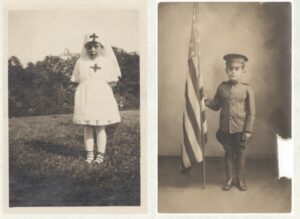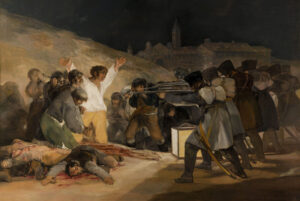At the 1914 outbreak of World War I Britain rushed cadets of the Royal Naval College, Dartmouth, from the classroom to sea. Among them was 15-year-old Eric Bush, who shipped out aboard HMS Bacchante, flagship of 7th Cruiser Squadron.
Bacchante was present during the August 28 British victory at Heligoland Bight off the northwest German coast. Though the ship saw no action, it took on both wounded British sailors and German prisoners. “A few of the wounded who had died in the night were placed behind a screen on the upper deck, so we had a peep at them,” Bush recalled. “I had never seen a dead man before…quite an experience for a boy of just 15.”
During the April 25, 1915, landing of the Australian and New Zealand Corps at Gallipoli, Turkey, while Bacchante bombarded enemy positions ashore, Bush helmed a boat tasked with ferrying soldiers to the beachhead. In the predawn darkness he and his seven-man crew collected 150 Australians from the battleship HMS Prince of Wales and towed them ashore aboard three small launches. As casualties mounted, Bush and his men worked around the clock ferrying the wounded back to the ships. Not until midnight on the 26th did they return to Bacchante, having survived a shell strike but lost one crewman to gunfire. Bush remained on boat duty several weeks, and superiors recognized his efforts with the Distinguished Service Cross. Bush later served on the battleship HMS Revenge, witnessing the 1916 Battle of Jutland, the largest naval clash of the war.
At war’s end the Admiralty sent many prewar cadets back to school—in Bush’s case to Cambridge University. “It was a privilege to be there,” he reflected. “I think it civilized us a bit…we were very young when we went to sea and had manhood thrust on us, as it were, not only prematurely, but violently. Of a great many things that boys and young men learn automatically we knew nothing. In fact, it would not be untrue to say we knew extremely little about life ashore.”
In 1922 Bush joined the light cruiser HMS Columbo on the East Indies Station, where he secured his first command, captaining the gunboat Ladybird on patrols along China’s Yangtze River. He then spent two years at the naval intelligence division’s Japanese desk before returning to sea aboard the heavy cruiser Devonshire.
Bush was serving as a captain in the antisubmarine Auxiliary Patrol in late May 1940 when the British rallied to evacuate Allied troops from Dunkirk, France. His efforts as beachmaster at La Panne earned him the Distinguished Service Order. A year later Capt. Bush took the helm of the newly commissioned light cruiser HMS Euryalus, which in 1943 provided covering fire for the Allied landings at Sicily and Salerno, earning Bush a second DSO. After returning to Britain, he commanded the leading edge of the naval assault force at Sword Beach during the 1944 invasion of Normandy, for which he received his third DSO. Bush ended out the war as a staff officer in the Far East, witnessing the surrender of Japanese forces in Singapore on Sept. 12, 1945.
After the war Bush commanded HMS Ganges, the Royal Navy training establishment for boys, inspiring recruits and fostering their respect for the service through his retirement in 1948. His 1975 book Gallipoli remains one of the most compelling accounts of the campaign by a participant. The storied Royal Navy sailor died at age 85 in 1985.





